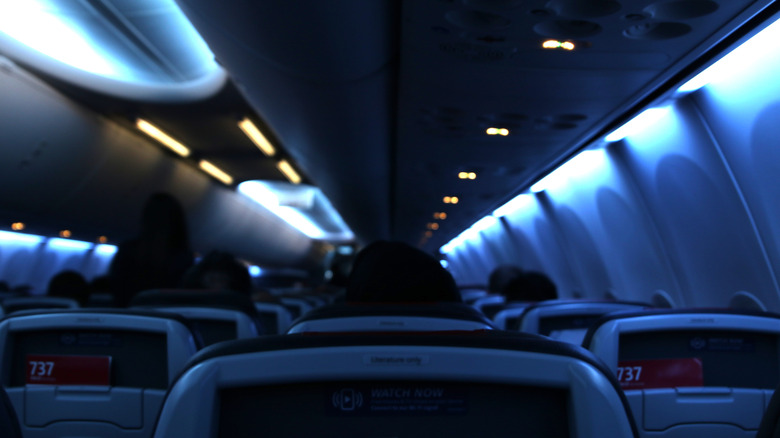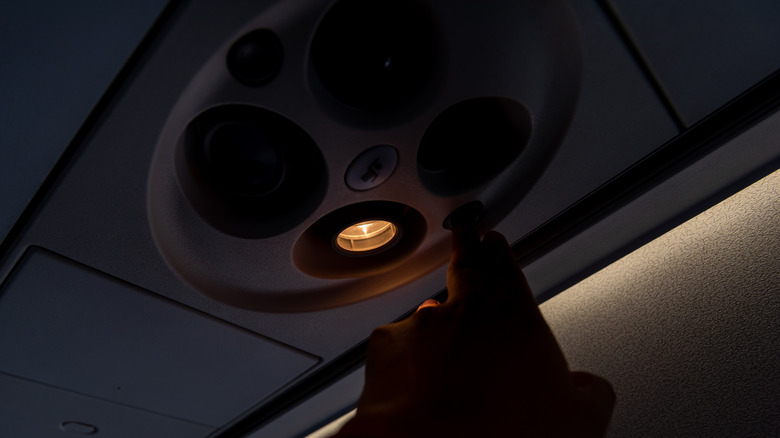Why Planes Dim The Lights Before Landing
Planes may be common vessels for travel, but they're still mysterious to many people. One thing that can confuse some is the reason why aircraft dim their lights before takeoffs and during landings. While seemingly an addition for nothing more than comfort and leisure, the truth is that there's a far more important reason for this procedure.
Light dimming during these periods is critical for the safety of all those on board. While airplanes are still among the safest forms of travel out there, airlines still must be prepared for the worst case scenarios. This is especially important during both takeoffs and landings. These are the most likely instances where accidents occur, with nearly 50% of recorded incidents taking place during landings alone.
In the case of an emergency, the lights are kept off to allow crew members to be able to see outside of the window, accurately assess the situation, and communicate to the control center. Dimming the lights before such a situation even occurs allows passengers' eyes to comfortably adjust to the darkness. Harshly cutting off the light would otherwise create a more chaotic situation than a plane emergency likely already would be. Additionally, keeping the lights off makes important symbols and signs, such as those pointing towards emergency exits, more visible.
Other reasons why planes dim their lights
Once again, it's important to note that the chances of a serious plane incident occurring are practically zero. Even if planes in today's age bear surprising similarities to those built a half century ago, the strict regulations and numerous precautions put in place for aircraft nevertheless continue to develop and prove effective. Because of this, it may make the dimming of plane cabin lights seem superfluous. However, even if the primary reason for this taking place is to prepare passengers for potential emergencies, there are additional benefits to keeping the lights low on a flight.
One of these is to save energy. As you can imagine, planes require immense amounts of energy to stay moving, with commercial aircraft such as the Boeing 747-400 being among the most power-hungry modern machines. As a result, being able to conserve as much energy as possible is important to helping maintain steady performance. Keeping the lights low means that the engine is put under less stress, and the plane as a whole can better navigate tough conditions.
And, of course, keeping the lights dimmed is ideal for the comfort of travelers. Plane flights can be lengthy and uncomfortable for many, so any way to keep passengers calm is important, especially during nighttime flights where some may be attempting to sleep. This psychological aspect also ties back into the larger safety concerns as well, as having passengers be as calm and organized as possible is crucial during an emergency.

